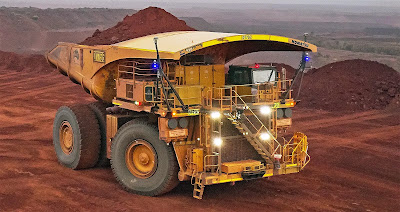The private equity category includes both venture capital, buyout funds, and SPACs, which acquire private companies to take them public.
WAM Alternatives (WMA.AX). Share of net worth: 4.32%. IRR: 16.9%. About a quarter of this fund is allocated to venture capital (one quarter is in real estate and half in real assets, mainly water rights). This fund was started by the failed Bluesky group and has now been taken over by Wilson Asset Management. The fund has traded deep below NAV. It has closed some of the gap but is still below NAV. I'm holding the fund mainly in the hope that eventually it trades at a premium to NAV and for exposure to real assets like water rights. The underlying performance is not that good. In 2020 it lost 3 cents per share in NAV to $1.08 per share while paying out 4 cents in dividends. This year, so far it's gained 6 cents per share, which I guess is OK.
Aura Venture Fund I. Share of net worth: 3.05%. IRR: 20.0%. This is an early stage venture capital fund run by Australian/Singaporean company Aura. It invests in Australian start ups. This fund actually has a negative tax rate – fund earnings are tax free and you get a 10% tax offset on your investment contributions. This is part of the Australian government's policy to encourage start-up companies. None of its investees has failed, though some are now valued below the fund's initial investment price. Some have done really well. Shippit is the star. Some investees have already been exited or are on the way there. The latest is Superestate, which is a residential real estate super fund acquired by Raiz. Superestate has been struggling due to the incompetence of the ATO. The fund is receiving shares in Raiz, which is listed on the ASX, which value the company below the carrying value. Hopefully, Raiz will do well and the shares will gain in value.
Pengana Private Equity (PE1.AX). Share of net worth: 2.40%. IRR: 15.3%. This fund invests in mostly North American private equity (but also in Europe) via funds managed by its partner Grosvenor Capital Management. There are a LOT of fees in this structure, but when I attended the pre-IPO presentation I was persuaded that there was still upside for investors. Initially the share price performed very well and I made money trading the stock. But then the firm issued more shares and the price has settled at NAV. It has struggled to make headway due to the rise in the Australian Dollar negating the gains on the underlying funds. So, the IRR mostly reflects my earlier trading.
3i (III.L). Share of net worth: 2.06%. IRR: 13.8%. This is my oldest private equity investment. I first invested in 2008, during the GFC. By investing in this company, you invest in the business itself, but also in its investments. The firm invests its own capital as well as managing outside funds. When I first invested, the firm invested in venture and buyout. It has pivoted to invest in buyout and infrastructure. It also manages far less outside money than it did. I haven't really been following the company in detail recently until I had to write this report. The proprietary capital is mostly invested in private equity. The fund invests mostly in Europe (but also in North America).
Aura Venture Fund II. Share of net worth: 1.40%. IRR: n.a. Based on the success of Aura VF I, I invested 2.5 times as much money in their next fund. It has not yet made any investments. The initial investment is 25% of the total. So, this would be about 5% of our current net worth when fully invested (not counting any returns on top of that).
Pershing Square Tontine Holdings (PSTH). Share of net worth: 1.35%. IRR: n.a. My newest investment. Pershing announced that they are going to acquire a 10% stake in Universal Music (UMG), which Vivendi is taking public in the next couple of months. But that will leave cash in PSTH and Ackman has a convoluted plan for keeping the company going as a private equity company, acquiring private companies and taking them public. Investors didn't like the UMG deal, but I think it is worth being in on the potential upside of future deals.

































